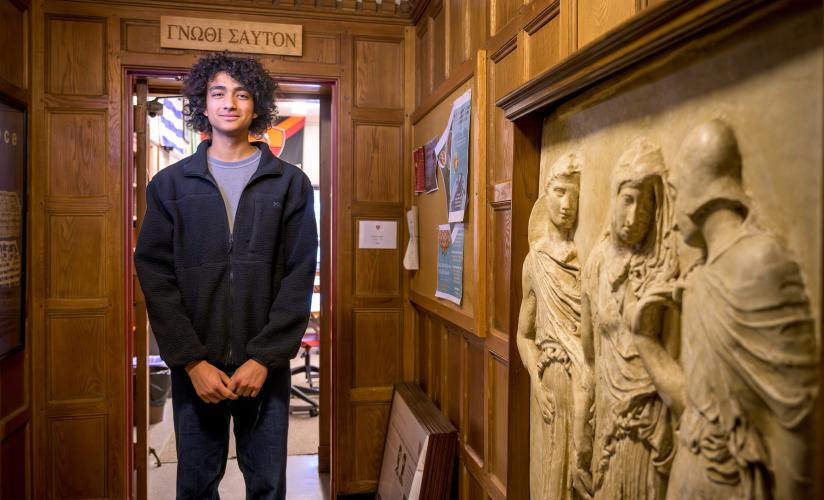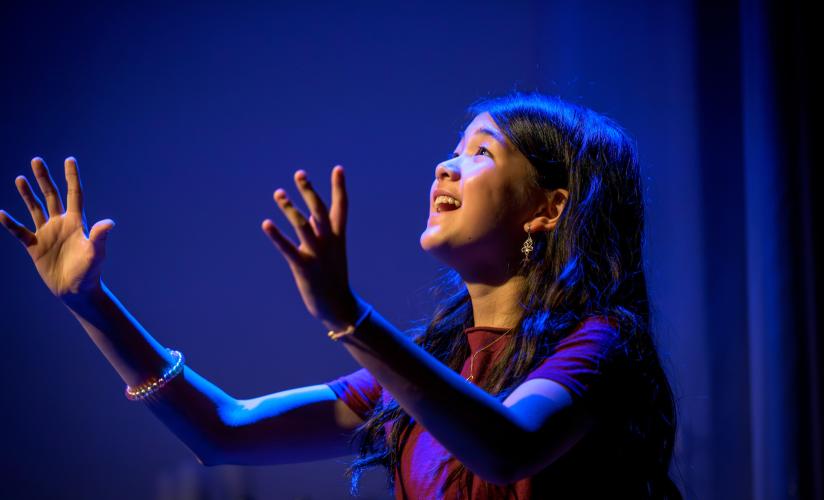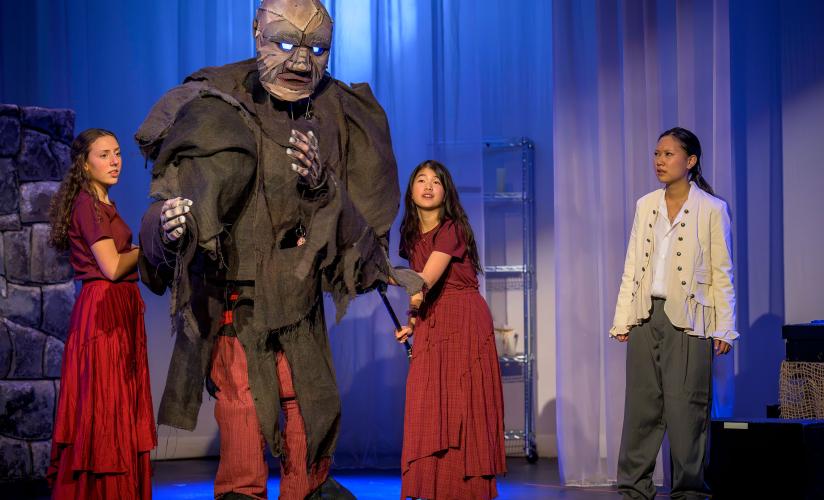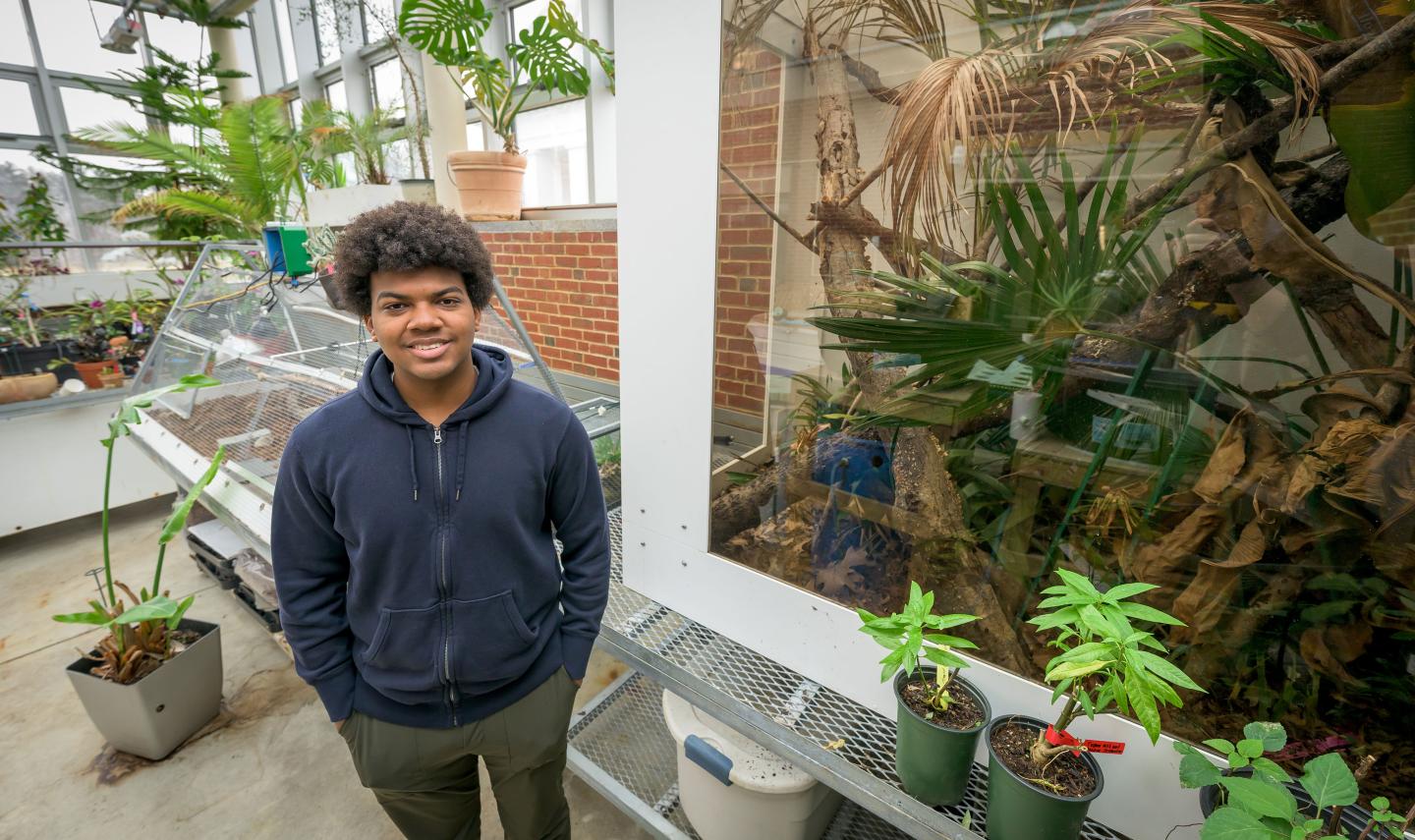

For Garrett Stiell ’23, lizards are a scaly study in adaptation
BY JACQUELINE PRIMO LEMMON
In the corner of the Lindsay Center greenhouse — past trellis shelves holding an array of potted plants, behind an aquaponic pond where foot-long white and gold tilapia swim under an auto-feeder at a languorous pace — stands a slice of the Costa Rican rainforest.
“All the insects come out at night, mostly,” says Garrett Stiell ’23 as he peers into the 6-foot-tall structure. Looking through the tinted glass at a neotropical green anole scuttering farther up a branch, Stiell laughs.
“They know when you’re watching them,” he says. “But on a really hot day, all five of them will sit on these top branches and they’ll just hang there.”
Called a biotope or biosphere, the structure is a self-contained ecosystem replicating a specific area — a Costa Rican rainforest in Stiell’s case, complete with indigenous flora and fauna. As of now, the main characters are five lizards, not to be upstaged by the hundreds of cockroaches, worms, crickets and other insects, including spiders who have wandered in from the greenhouse. But the insects burrowed into the forest floor and taking shelter under leaves are even harder to spot than the well-camouflaged anoles.
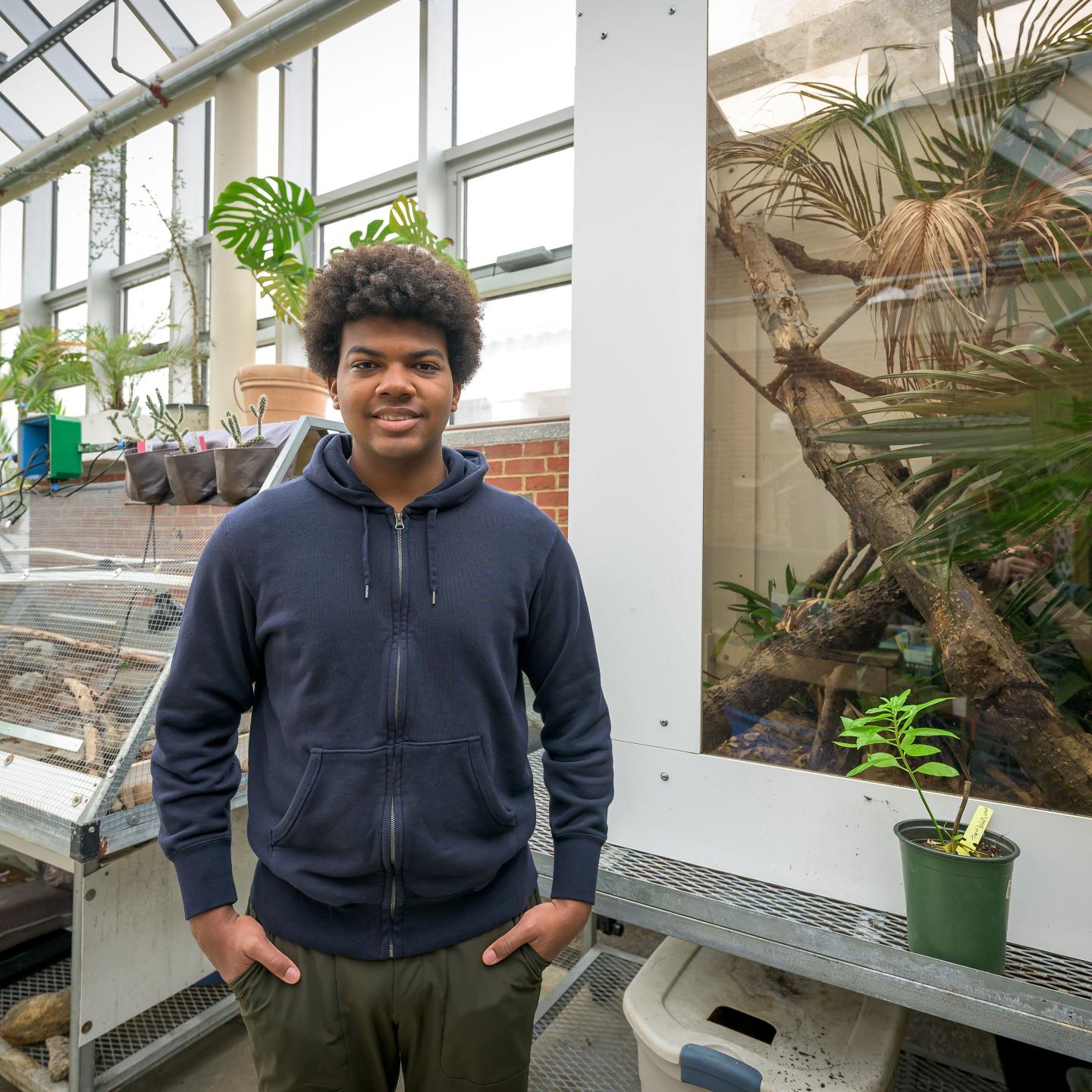
I really enjoy environmental science and studying ecology, or how ecosystems interact with each other and how the animals, the microbes and the soil all work together,”
So when he learned about the Burke Biodiversity Award — which recognizes St. Paul’s students who demonstrate great interest in understanding and preserving the natural world and its biodiversity — he wrote up a proposal with the assistance of Science Teacher Scott Reynolds, and was one of two students to win. The award meant a green light for the greenhouse biotope, which Stiell worked with Reynolds to plan, design and install.
“For a month or so, the plants were all in there getting acclimated,” Stiell says of the vegetation added last spring. Then came the insects and bacteria, followed by the anoles in late fall. “They’re these canopy-dwelling green lizards that live in Costa Rica, and really throughout Central America and a little bit of the Caribbean; they hop on shipping boats and go to different islands. We put five in there, and they’re basically the apex predators for now…until they start overpopulating and then we’ll have to put in a snake or something. But it’s really cool to see how they control the populations of all the insects and how everything just gets recycled and works together.”
Stiell is a patient educator when talking about the world he has created within the biotope, answering every question with a calm and steady enthusiasm. The scientific names for lizards and bugs roll fluently off his tongue: anolis biporcatus; isopoda.
But Stiell’s interests are trained elsewhere, too. When he entered SPS in 2019 as a Third Former, he took as many advanced photography classes as he could squeeze into his schedule and participated in summer film programs. “I’ve always had that slightly artsy, more visual arts side, so that was really my focus when I came to SPS,” he says.
His focus on science became clearer as a Fifth Former when he joined the Applied Science and Engineering Program (ASEP), in which students do an internship during the summer before Sixth Form, followed by a capstone project during Sixth Form. Stiell’s focus was herpetology, the study of reptiles and amphibians, and his internship was with the Digital Imaging Division at the Florida Museum of Natural History.
Stiell spent five weeks working with an associate scientist at the museum, scanning and studying monitor lizard specimens to see how different environmental factors changed their skull features. “That process is called adaptive radiation, which was the title of my capstone paper, actually, and is basically the process where factors in the environment cause them to change rapidly over time,” Stiell explains.
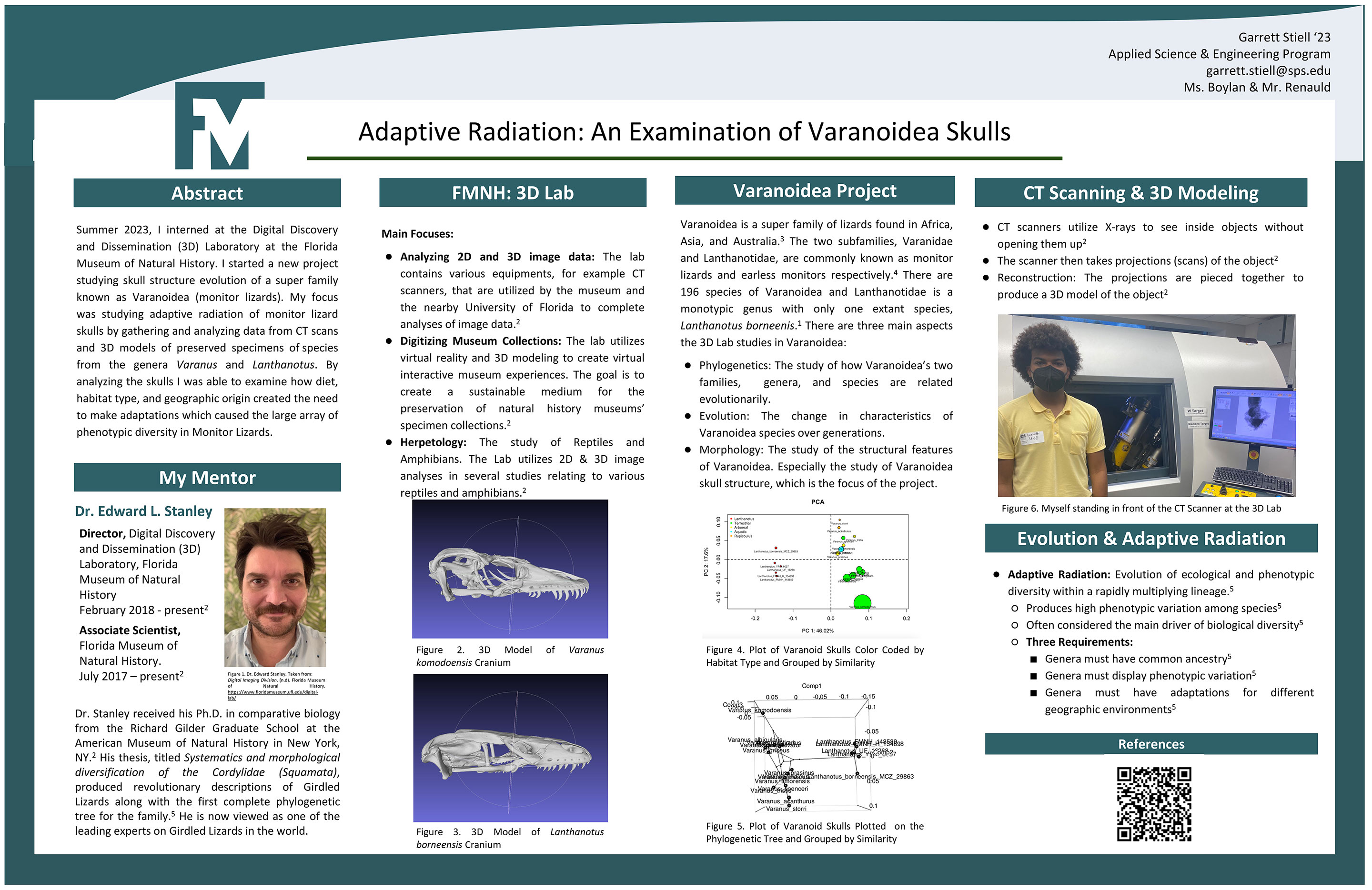
In practice, this research meant running specimens through a computed tomography scanner akin to those used for CT scans on humans — a process Stiell says was not as technical as one might assume. He then plotted skull points on the lizards and created 3D models of them to compare the differences and similarities between monitor lizards’ skulls from all over the world.
While the majority of the lizards he looked at were segregated into their family types, there were two — Lanthanotus borneensis (the earless monitor lizard) and Heloderma horridum (the Mexican beaded lizard) — that showed up as similar on every graph he plotted. “And I have to do a lot more digging, and probably another whole research paper, just to figure out why that is,” Stiell says, laughing as he acknowledges the true nature of science: one question leads to 10 more.
In addition to his work resulting from the Burke Biodiversity Award and with ASEP, Stiell also is a captain of the Robotics Team and a prefect in Middle. With plans to attend Morehouse College in a dual degree program for applied physics and environmental engineering, Stiell ultimately wants to get a law degree in environmental policy and work in environmental consulting.
As for what’s next for the biotope? Tree frogs are in the running, Stiell says — adding in a tone that doesn’t sound like he’s joking: “We could have put a monkey in there, but they cost like $8,000.”

